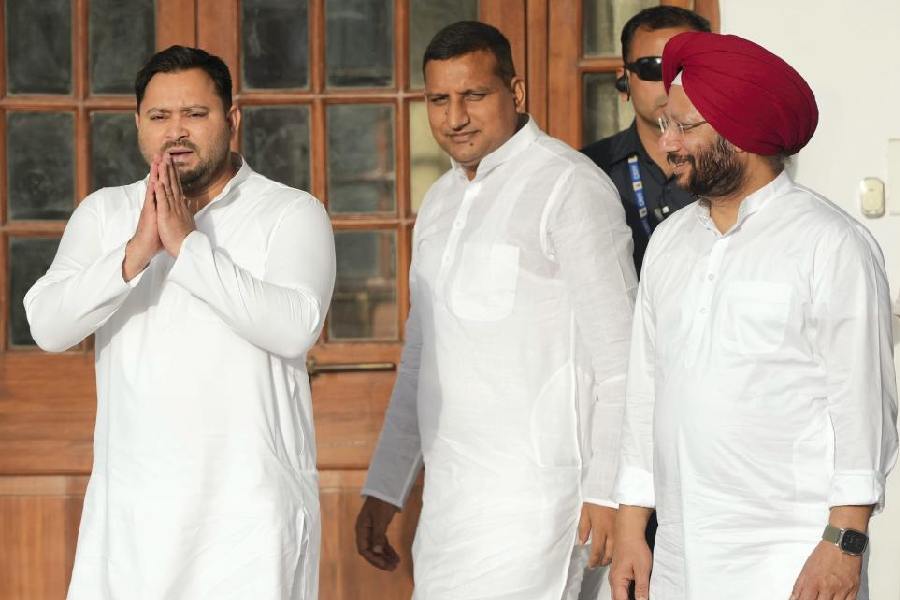The Rashtriya Janata Dal (RJD), which happens to be the largest party in the Bihar Legislative Assembly with 79 seats, won just four Lok Sabha seats out of the 23 it contested as part of the INDIA bloc in the just concluded elections.
The poor performance came as a setback for the Opposition alliance and became one of the reasons behind bringing down its chances of forming the government at the Centre.
RJD leader Tejashwi Prasad Yadav had spearheaded the INDIA campaign in the state, addressing 251 rallies and conducting several road shows, way more than his opponents.
Tejashwi’s rallies always attracted a sizable and boisterous crowd, mainly composed of teenagers and youngsters, many of whom were not even eligible to vote, and at times behaved like hooligans. The sizable presence of people did not translate into votes to ensure victories in various seats.
The poor performance indicated that people could not get over the fear of the “jungle raj” (lawlessness) during the 1990 to 2005 rule — a point that the NDA leaders, including Prime Minister Narendra Modi and Nitish Kumar, incessantly raked up.
There was also a mysterious absence of women at his rallies, indicating that either they did not care about the RJD, or abstained because of the fear of the party supporters.
“The women voters stayed away not only from the RJD rallies but also avoided voting in the party’s favour. Apart from the fear factor, the 5kg per person free food grains seemed to have worked among them because their prime focus is on how to keep the hearth warm,” a senior RJD leader told The Telegraph.
Incidentally, female voter turnout was 59.4 per cent in Bihar, a good six per cent more than the male voter turnout of 53.3 per cent. Though the migration of males in search of work to other states is one of the reasons behind this, women played a big role in the Lok Sabha results here.
The RJD has always banked on the MY (Muslim – Yadav) equation, which
together form 32 per cent of the state’s population. It had also tried to expand its base by talking about A to Z encompassing everybody in the society, and also including BAAP (Bahujan or scheduled castes, Agada or general castes, Aadhi Aabadi or women, and Poor) in the equation.
However, its original MY equation showed signs of cracking in front of the NDA contestants and the other equations also did not work.
The victory of the BJP candidates — Nityanand Rai in Ujiarpur and Ashok Kumar Yadav in Madhubani — are examples of this. The two Yadav candidates successfully attracted the votes of their castes away from the RJD, because their opponents were other castes.
The RJD had fielded Alok Kumar Mehta (a Kurmi) from Ujiarpur and Ali Ashraf Fatmi from Madhubani, leading to an exodus of the Yadav votes to the BJP camp.
Similar situations emerged at Jhanjharpur, Sitamarhi and Purnia seats where the Yadav voters did not blindly opt for the RJD candidates. In Purnia, muscleman turned do-gooder Rajesh Ranjan also known as Pappu Yadav won by attracting MY votes.
Moreover, fielding seven Kushwaha caste candidates in an attempt to lure votes did not pay well and the Yadav voters were scattered all around.
Asked about other reasons, an RJD MLA told this newspaper that Tejashwi is surrounded by a coterie of people, who do not have a good image.
“This coterie has distanced Tejashwi from the people and stops correct feedback from directly coming to him. Moreover, he has started imitating a rustic style on the lines of his father Lalu Prasad, which is not going down well with the people. Times have changed and they want an educated and suave leader among them,” the MLA added.
However, the RJD topped the charts in vote share. It got 22.14 per cent of the total votes cast in the polls, while the nearest rival BJP got 20.52 per cent and chief minister Nitish Kumar’s JDU got 18.52 per cent of the total votes cast.
“Our party’s vote share has increased and is more than any other party. Though it was not enough to convert into victories, it did lessen the margin of defeat in comparison to 2019,” an RJD leader said.
A few leaders pointed out that relying on outsiders like Rajya Sabha member Sanjay Yadav and giving a ticket to Deepak Yadav in Valmiki Nagar, who hails from Haryana, also did not go down well with the people.











